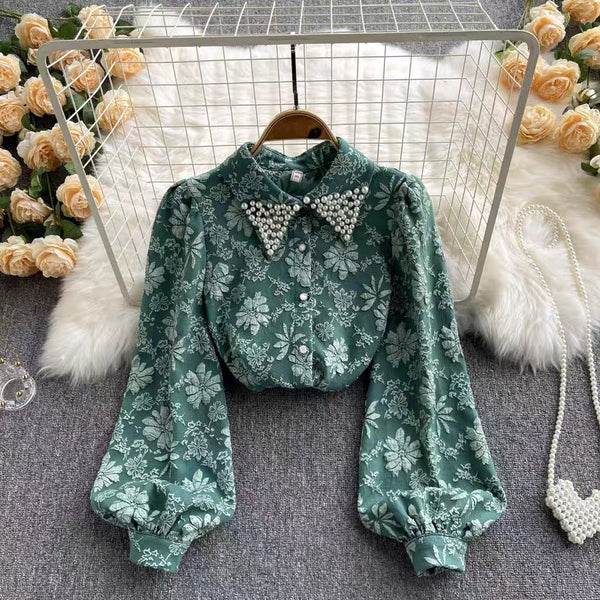However, some sarees go overlooked by ladies who want to show off their ethnic clothing. As a result, we have selected 10 Indian regional sarees for you to add to your wardrobe and build a collection that exemplifies the excellence of Indian craftsmanship.
1.Kalamkari saris
An ancient method of hand painting using a tamarind pen and natural colours on cotton or silk fabric is known as kalamkari. The Persian term “kalamkari”—which means pen and “kari”—is the source of the English word “kalamkari.” This craft requires 23 time-consuming procedures, including starching, cleaning, hand painting, block printing, and dying. Flowers, peacocks, paisleys, and celestial figures from Hindu epics like the Mahabharata and Ramayana are just a few of the motifs used in Kalamkari artwork.
There are 23 steps in the creation of kalamkari. The entire process, from the natural bleaching, softening, sun drying, making of natural dyes, hand painting, air drying, and washing of the cloth, involves accuracy and an attention to detail. A mixture of cow dung and bleach is initially used to treat cotton cloth used for Kalamkari. The cloth turns a consistent off-white colour after hours of soaking in this solution. The cotton material is then submerged in a solution of buffalo milk and Myrobalans. In the event that natural dyes are used to paint the cloth, this prevents dye smearing. The cloth is thereafter washed in running water to remove the smell of buffalo milk.
When the cloth is prepared for painting, artists draw motifs and patterns on it. Then, to add colour to the lines, the Kalamkari artisans make dyes from natural sources. The Kalamkars utilise a “tamarind twig” as a pen to draw intricate designs of Krishna Raas-Leela, Hindu deities like Parvati, Vishnu, and ShriJaganath, as well as peacock and lotus motifs and scenes from Hindu epics like the Mahabharata and Ramayana.
2. Pattachitra
Sarees One of the oldest and most well-known art styles, Pattachitra style painting is mostly practised in West Bengal and Odisha. The Sanskrit words “patta,” which means cloth, and “chitra,” which means image, have combined to form the term Pattachitra. This art form, which is among the oldest and most well-known currently practised ones, is said to have its roots in the 12th century. The Hindu mythology served as the primary inspiration for the icon paintings created by the Pattachitra painters, commonly referred to as chitrakars. The Badhia (a representation of the Jagannath temple), Krishna Lila (a portrayal of Jagannath as Lord Krishna demonstrating his abilities as a kid), Dasabatara Patti, and Panchamukhi (a representation of Lord Ganesha as a five-headed deity) are the most well-liked themes.
The occurrences are all displayed side by side. The folk and classical elements are combined to create the Pattachitra style. The chitrakars have painted on tussar silk and palm leaves as part of the admirable evolution of Pattachitra art that has occurred over time.
3.Paithani Sarees
The Paithani saree online has a story to tell. a historical tale with a long history. A story about silk and zari.A story of grandeur, elegance, and beauty.A traditional story. The Paithani saree, which originated in Maharashtra, dates back to the Rigveda. Under the Peshwas’ support, the Paithani flourished in the 18th century. Madhavrao Peshwa is reputed to have had a special affection for Paithani textiles. According to legend, the Nizam of Hyderabad was also taken with the Paithani, and it was his daughter-in-law Nilofer who added additional patterns to the border and pallav designs. Therefore, the Mughals later added additional themes.
Paithan was formerly a thriving commercial hub known as “Pratisthan” that sent fine textiles and priceless stones to distant regions. In Greece between 200 and 400 BC, magnificent paithani sarees with exquisite gold and silver thread work were traded for gold, according to historians.
What exactly makes the Paithani so alluring? Is it the zari, silk, hues, or designs? Perhaps it’s merely the extent of its overall richness. Its fabric is totally handwoven on looms. It is a fusion of exquisite hues and elaborate patterns. To create the dhoop-chhav appearance, two different coloured threads are combined in a straightforward tabby weave. The ornate zari border and pallav give the otherwise simple Paithani its grandeur. In the past, gold was used to make zari. The absence of any mechanised production techniques makes Paithani unique.
4. Sarees from Kanjeevaram
Hindu mythology serves as the origin of Kanjivaram sarees online. The Markanda Silk Weavers, who were reputed to have woven garments for the Gods themselves, are claimed to be the ancestors of the Kanjeevaram Silk Weavers. This beautiful weaving has a history dating back more than 400 years and originates from the little town of Kanchipuram in Tamil Nadu. The two main weaving tribes, the Devangas and the Saligars, are reported to have relocated from Andhra Pradesh and established themselves in the hamlet of Kanchipuram. They began weaving beautiful figures they spotted on the temples around the town into the mesmerising Kanjeevaram silk sarees using their weaving talents. Soon after, this lovely cloth gained notoriety and became one of the essential components of the saree.
5. Sarees in Chanderi
As a geographical indicator, Chanderi’s output from India has been maintained. A little settlement called Chanderi may be found close to the Betwa River in the Vindhyachal mountain ranges. Chanderi, which is part of the Ashoknagar district of Madhya Pradesh, is renowned for its historical past and experiences brisk economic growth as a result of its advantageous position in central India. The looms are in Chanderi. The oldest section of the city, sometimes referred to as “Baharsheher” or “out-of-town,” is where the majority of looms or bunker colonies are found. While wandering around the neighbourhoods of Chanderi, one can plainly hear the echo of work frames. Weaving was also funded by those anticipating Chanderi. They appeared to be aware that the fate of Chanderi is connected to the fate of the fabric they were carrying.
6.Chikankari
Sarees Lucknow is renowned for its unique fusion of traditional and modern values. In addition to its stunning architecture, extensive knowledge of the Nawabs, and mouthwatering kebabs, Lucknow also excels in the craft of embroidery. Chikankari, one of the most well-known embroidery techniques, literally means embroidery. It is a traditional cloth embellishing technique that has gained worldwide fame. Since the term “Chikan” has distinct meanings in many languages, it is thought that it originated from a variety of etymologies. For instance, the Persian word Chakin or Chakeen signifies creating delicate designs on a fabric, but the East Bengali word Chikan denoted fine.
7.Bandhani Sarees
The tie-dye technique known as Bandhej, often referred to as Bandhani, is mostly used in the states of Rajasthan, Gujarat, and some regions of Uttar Pradesh. The Sanskrit term Banda, which meaning “to tie,” is the source of the word bandhani. A fabric is dyed and then tightly bound with thread at various spots to create a variety of patterns—this process is known as bandhani. The earliest type of tie-and-die art is called bandhej, and it dates back roughly 5000 years. According to historical evidence, Bana Bhatt’s Harshacharita, which took place in a royal wedding, was the occasion for the first Bandhani saree to be worn. The Ajanta caves have one of its oldest graphic depictions. The Gujarati Khatri Community invented bandhani handicraft in India.












